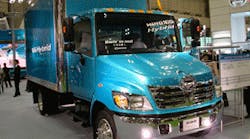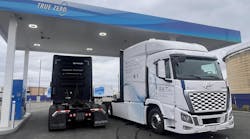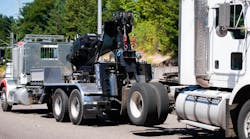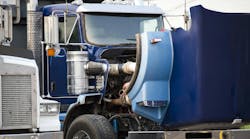Two Hino 165 conventional Class 4 trucks powered by a diesel/electric hybrid system will be arriving in the U.S. next month. The trucks will be used to demonstrate the Hino proprietary system and could eventually be assigned to long-term field tests with a package delivery fleet, according to a company spokesman.
Unveiled at the Tokyo Motor Show in mid November, the hybrid is based on the new Hino conventional models developed specifically for the North American market and built at the company’s new Long Beach, CA, plant. A cabover version of the hybrid has already been introduced as a production model for the Japanese domestic market where virtually all truck makers have moved quickly to offer electric hybrid medium trucks and busses.
The Hino 165 hybrid, rated 16,000 lbs. GVW, is powered by the company’s standard 4-cyl. 5-liter diesel. A proprietary flywheel generator/starter captures braking force when the vehicle slows, storing it as electrical power in a NiMH battery array. The electrical power is then used to augment the diesel on start up as well as during cruising.
Among the features of the Hino hybrid is a standardized battery pack that is also used in the Toyota Prius hybrid automobile, potentially making replacements easier to find and less expensive. The flywheel generator produces 23 kW of power and is mated with an Eaton 6-speed automated mechanical transmission.
In SAE fuel tests the system improved fuel economy by 14 to 27% with the largest gains coming in pickup and delivery operations, according to Kenichi Kobayashi, asst. chief engineer for Hino’s North American Truck Product Planning Div.
Weight for the hybrid system in the demonstration units is 400 kilograms (880 lbs.), but the target for production versions is 250 kilograms (550 lbs.), Kobayshi says. On the domestic Japanese COE production model, the system adds 1,160,000 yen (approximately $11,000) to the price of the truck, but 75% of that cost is covered by subsidies from the government and an industry trade group.



